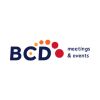What is passive measurement? And how can it improve events?
This article was originally published by C&IT on August 15, 2024.
While active data collection methods involve direct engagement with attendees, passive measurement takes a different approach, Julie Yorke, Senior Director, Delegate Management, BCD Meetings & Events explains.
Events have long been the domain of active data collection methods with surveys, feedback forms, and interactive polls the staple tools for gauging attendee engagement and satisfaction. However, with the relentless march of technology, Passive measurement is offering event organisers a powerful lens through which to gather insights and enhance the attendee experience.
Ranging from emotional heat mapping, wearable tech advancements through to how attendees engage with a website, Passive data is the data gathered indirectly about your attendees. It can cover a wide range of areas of your event, from movement patterns and interaction data through to session attendance and engagement levels.
Active data collection methods involve direct engagement with attendees, and while these methods can yield valuable insights, they can often disrupt the flow of the event. If the timing or frequency is off, valuable insights may slip through the cracks,.
However, used in tandem, Passive and Active tracking provide a powerful combination to track the entire attendee journey. Surveys or session selection pre-event will provide insight into attendee’s objectives and areas of interest. Coupled with Passive measurement on-site, we can track whether our on-site activity is meeting these objectives and post event polls will provide valuable feedback on engagement and intention to re-attend.
Passive data measurement is not a new concept. For years, we’ve discreetly tracked attendee behaviour using beacons, RFID, and wearables. What’s changing is how we leverage the data that was previously underutilised. Thanks to technological advancements like emotional heat mapping we can adapt and tailor content on the spot, ensuring that every interaction resonates with attendees on a deeper level.
Advancements in these technologies have also given us a holistic view of how content is resonating on almost a second-by-second basis. Couple this with AI, and gone are the days of delivering post-event content purely based on what the delegate attended, irrelevant of whether the content was valuable to them. If we combine hyper-personalisation with sophisticated segmentation techniques, we can tailor session and post event materials to match content that elicited the most positive emotional response.
And as agencies and event organisers’ requirements to demonstrate ROI, ROE, and ROO become increasingly complex, Passive data will also play a crucial role in validating an event’s success metrics. One of the many benefits of this type of data is the high participation rates as a result of participants opting in.
Passive data can offer a more comprehensive and objective view of attendee engagement. It’s very useful for making adjustments in real-time. For example, footfall information can alert the event organiser to potential bottlenecks or traffic hotspots in exhibition areas and layout adjustments can be made immediately. Sentiment tracking also provides immediate insight into audience engagement and content can be adjusted accordingly.
As technology advances, we can expect more sophisticated Passive measurement techniques that provide deeper insights into attendee behaviour, preferences, and engagement levels. Artificial intelligence and machine learning algorithms will be key in analysing vast datasets in real-time. However, with these opportunities come challenges, including data privacy, security, and ethical use.
As the industry evolves, it’s crucial for event organisers to strike a balance between innovation and responsibility. This means leveraging Passive data to enhance the attendee experience while respecting individual privacy rights and maintaining trust.
Originally published August 15, 2024 7:00:00 AM
Sign up to The Point
"*" indicates required fields



